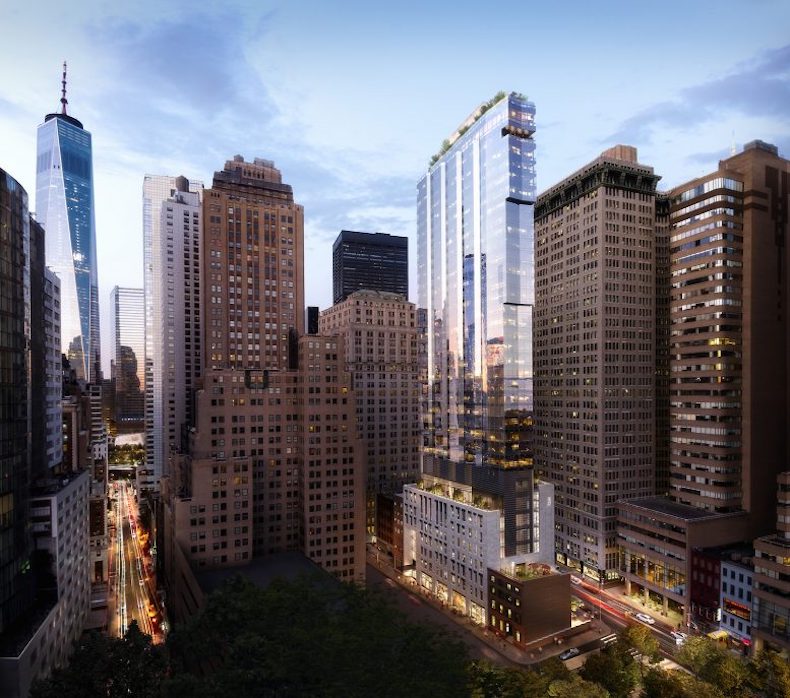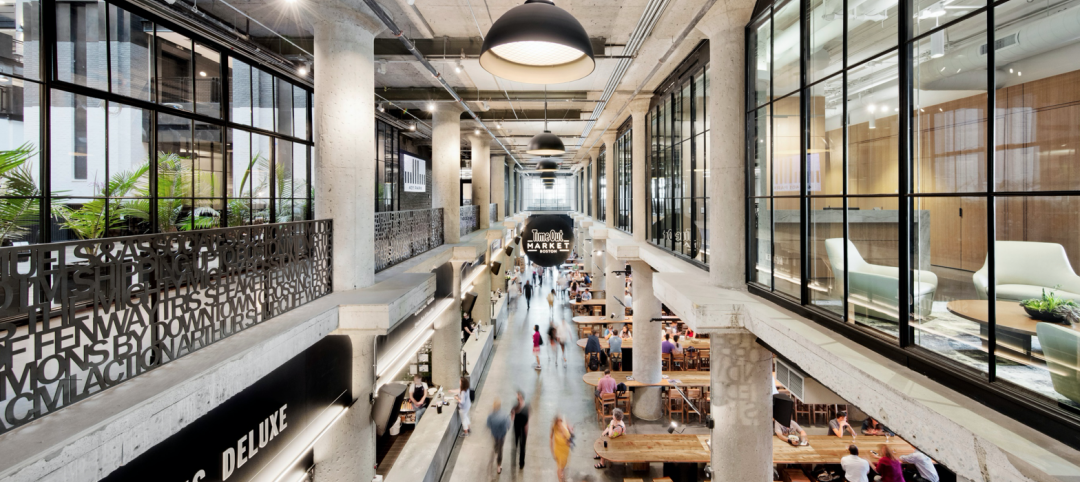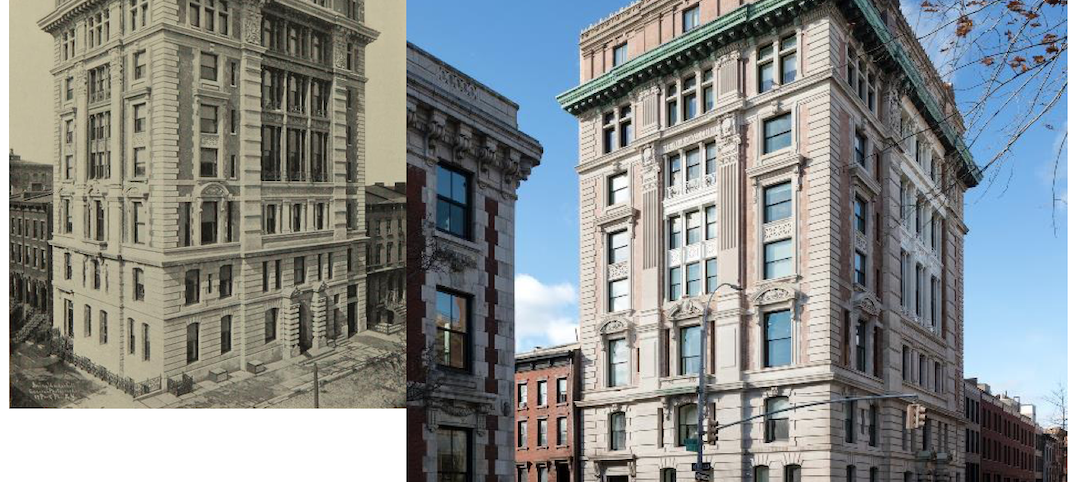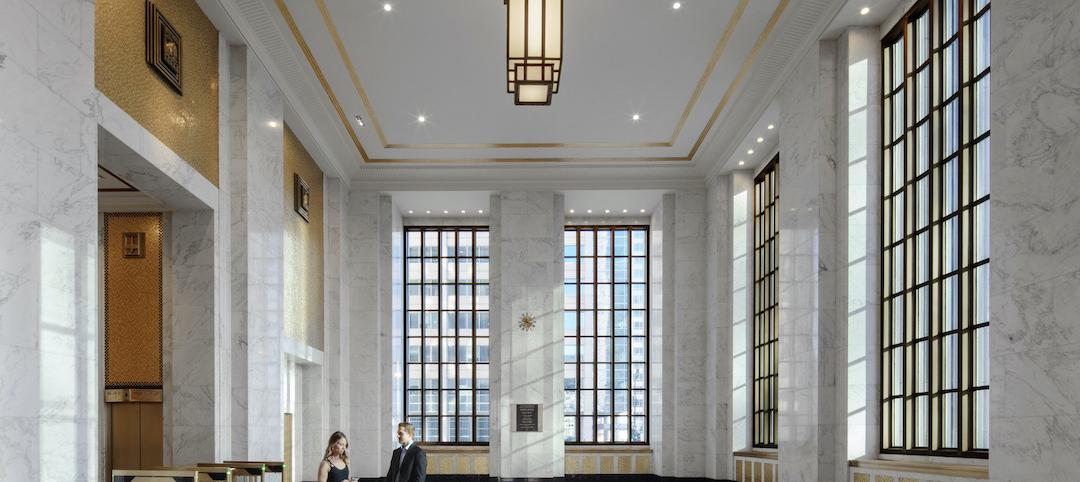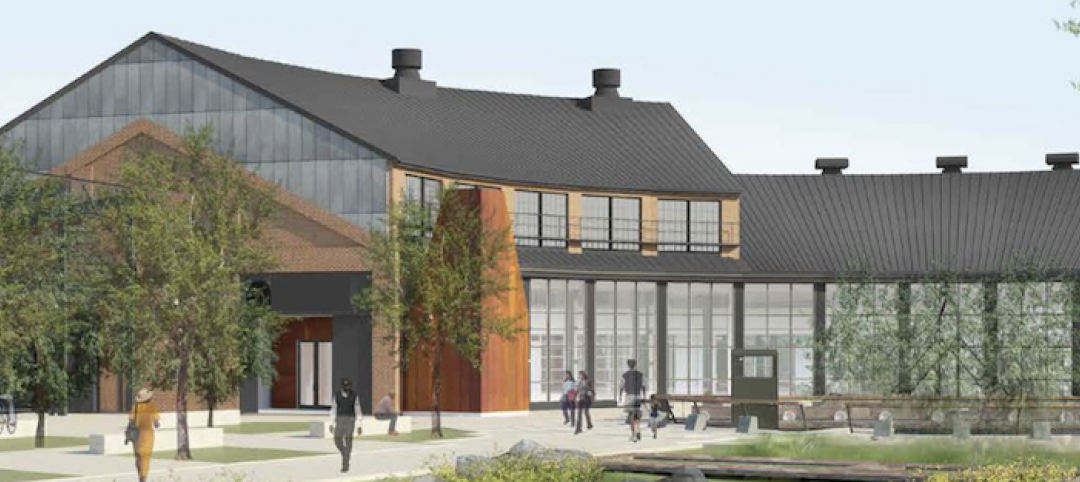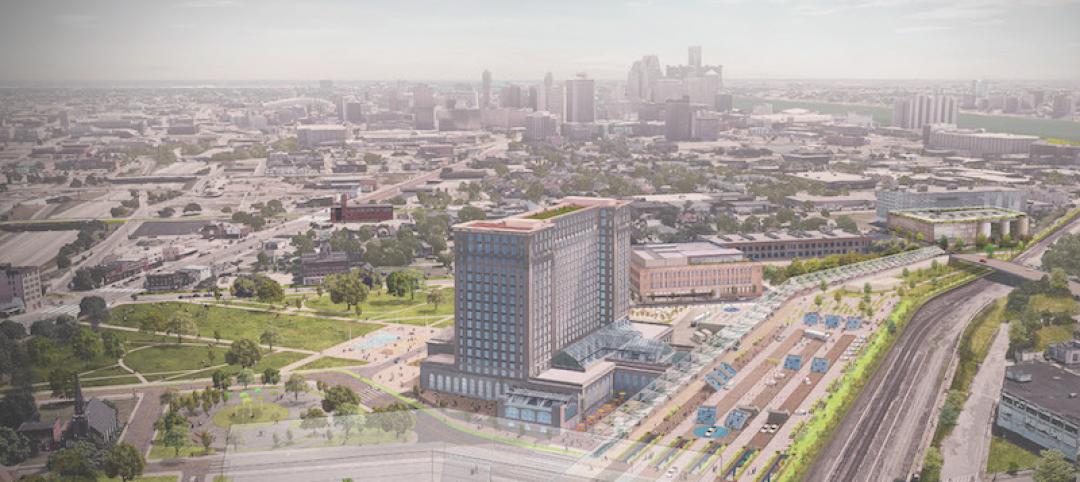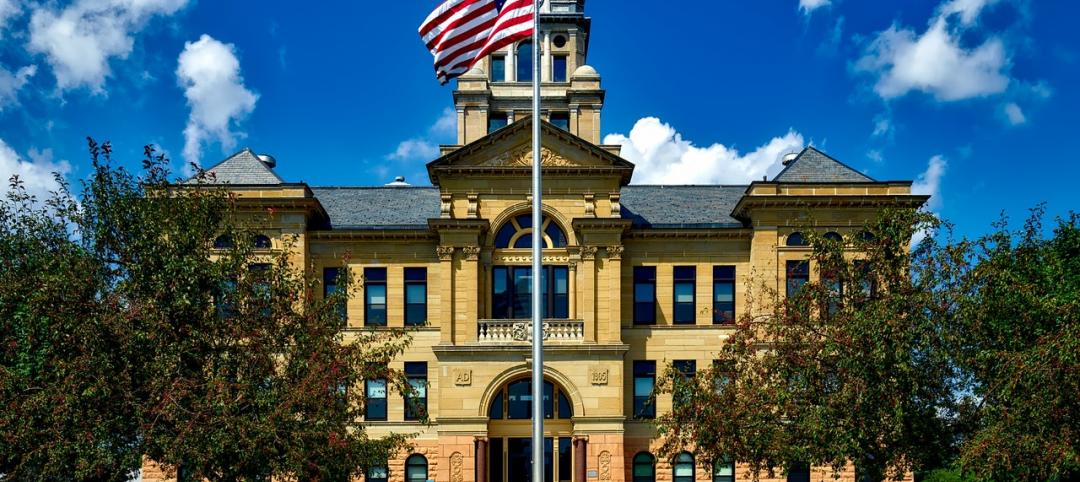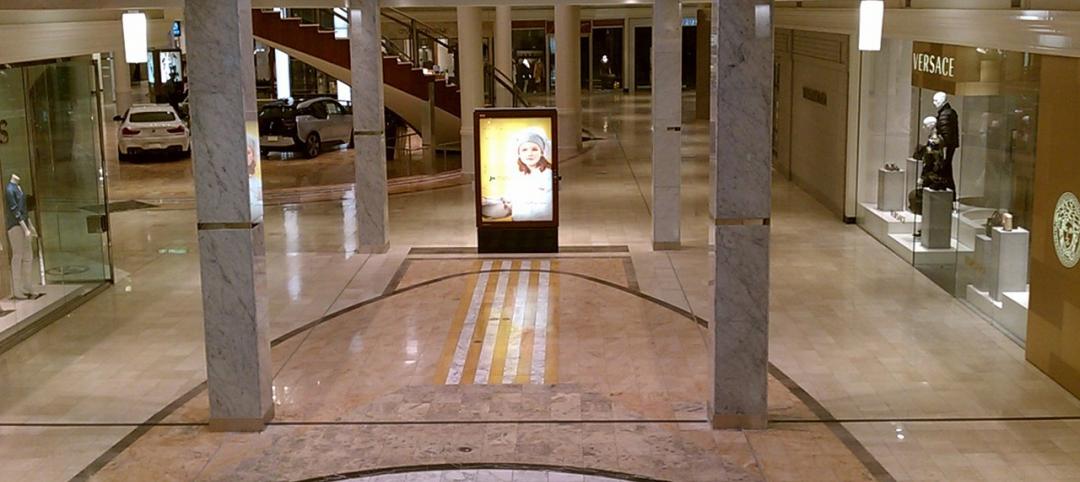New York City’s scarcity of developable sites, and pressures on the use of what land is available, have created opportunities for innovative design that, for the past few years, FXCollaborative has taken advantage of by creating hybrid buildings that pair tenants that typically stand alone.
“Our experience is understanding the three-dimensional puzzle,” says Dan Kaplan, a senior partner at the firm. He adds, too, that these hybrids—which he also calls “graphed buildings”—give owners and developers more options for monetizing their land and air space. “It’s found money.”
This has developed into something of a subpractice for FXCollaborative, as it touches on zoning, entitlement, and several of its other practices’ typologies.
The firm’s first hybrid project, which was completed in 2016, was 35XV in Manhattan’s Chelsea neighborhood. The 170,000-sf project utilized excess development rights from the historic Xavier High School by expanding the school by 40,000 sf and building condos on top of that building. The school’s emergency power and egress are independent of the residences. The finished product, certified LEED Silver, rises 347 ft. (The clients were Alchemy Properties and Angelo Gordon.)
Nearing completion this year is a similar hybrid, 77 Greenwich, which has street-level retail and a 70,000-sf 476-seat public school at its base, and a 90-unit residential tower above, crowned with a penthouse. Trinity Place Holdings is the client for this 300,000-sf 42-story stone and glass building. “It doesn’t look like your standard public school,” says Kaplan.
One Willoughby Square in Brooklyn, which is scheduled for completion next year, will include 34 stories of office space graced with abundant daylighting and outdoor terraces, coupled with ground-level retail and a 320-seat public school on floors two through six, with its own entrance. Office workers and students will benefit from a new one-acre park in front of the building. (JEMB Realty is the client.)
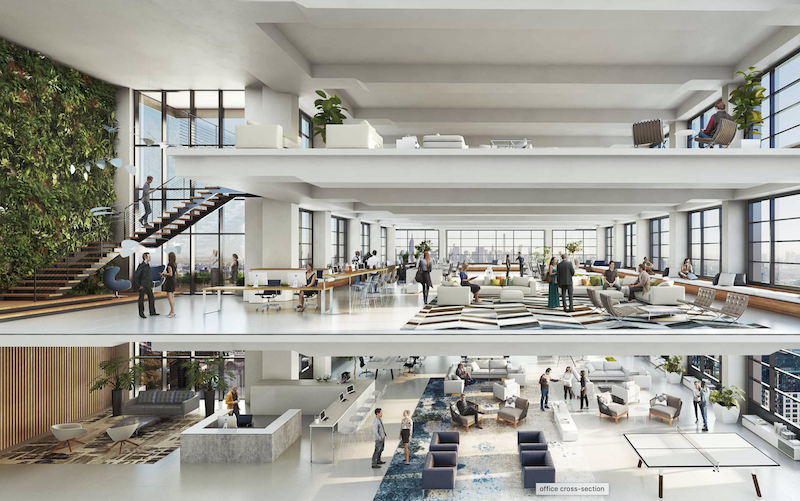 A cutaway rendering of what the office layout will look like at One Willoughby Square in Brooklyn, which will have a school and retail space on its lower floors.
A cutaway rendering of what the office layout will look like at One Willoughby Square in Brooklyn, which will have a school and retail space on its lower floors.
In the works, although construction hasn’t started yet, is La Hermosa Church, which FX Collaborative is working with to develop a 33-story building on the site of an existing house of worship that would include 160 residential units, of which 50 will be affordably priced. Adjacent to the tower would be a low-rise community center that includes space for religious worship as well as a gallery and event space, practice rooms, and performance space.
Kaplan notes that the building is in a neighborhood where Latin jazz has its roots, “so community is superimportant.” The development must also address landmarking, which Kaplan explains can be a challenge for a religious structure at a time when parishes are shrinking.
In January, FXCollaborative hosted a panel discussion about hybrids with a land-use attorney, a developer, and representatives from ULI NY and New York City’s School Construction Authority. Kaplan says that FX has been getting more interest from developers and owners throughout New York's counties: new projects include a library in Brooklyn, N.Y., that would have condos or offices above it. “These are buildings within buildings, and it all comes down to design and site planning,” he says.
Related Stories
Reconstruction Awards | Jan 30, 2021
Repositioning of historic Sears Roebuck warehouse enlivens Boston’s Fenway neighborhood
Developer Samuels & Associates asked Elkus Manfredi Architects to reimagine the former Sears Roebuck & Co. warehouse in Boston’s Fenway neighborhood as a dynamic mixed-use destination that complements the high-energy Fenway neighborhood while honoring the building’s historical significance.
Multifamily Housing | Jan 20, 2021
Abandoned Miami hospital gets third life as waterfront condo development
The 1920s King Cole Hotel becomes the Ritz-Carlton Residences Miami in the largest residential adaptive reuse project in South Florida.
Adaptive Reuse | Dec 17, 2020
A train engine repair building is turned into an innovation center that’s part of a massive riverfront redevelopment in Pittsburgh
The adaptive reuse of the Roundhouse is the latest step forward for Hazelwood Green.
Reconstruction Awards | Dec 14, 2020
Wyoming Capitol Square renovation project is all about the details
The Wyoming Capitol Square project has won a Gold Award in BD+C's 2020 Reconstruction Awards.
Urban Planning | Dec 6, 2020
Ford lays out plans for mobility innovation district in Detroit
Its centerpiece is an abandoned train depot whose architecture and decay reflect two sides of this city’s past.
Multifamily Housing | Dec 4, 2020
The Weekly show: Designing multifamily housing for COVID-19, and trends in historic preservation and adaptive reuse
This week on The Weekly show, BD+C editors spoke with leaders from Page & Turnbull and Grimm + Parker Architects about designing multifamily housing for COVID-19, and trends in historic preservation and adaptive reuse
Giants 400 | Dec 3, 2020
2020 Reconstruction Sector Giants: Top architecture, engineering, and construction firms in the U.S. building reconstruction and renovation sector
Gensler, Jacobs, and STO Building Group head BD+C's rankings of the nation's largest reconstruction sector architecture, engineering, and construction firms, as reported in the 2020 Giants 400 Report.
Adaptive Reuse | Oct 26, 2020
Mall property redevelopments could result in dramatic property value drops
Retail conversions to fulfillment centers, apartments, schools, or medical offices could cut values 60% to 90%.


